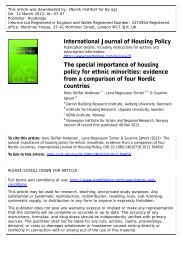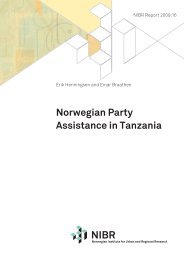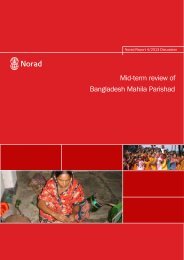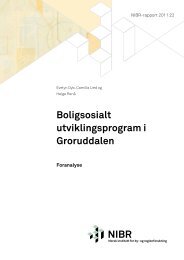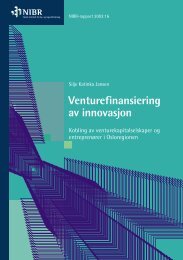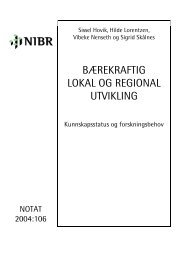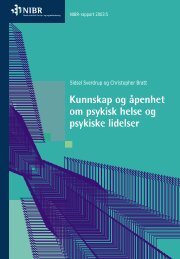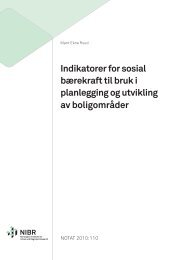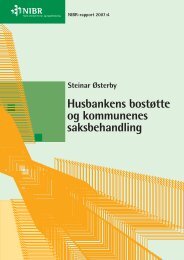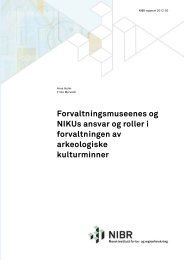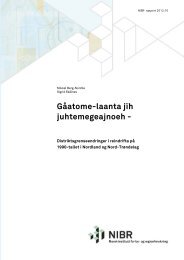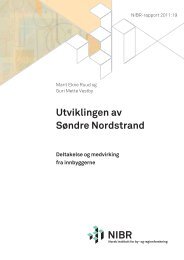Evaluation of the Southern and Eastern Africa Regional Centre for ...
Evaluation of the Southern and Eastern Africa Regional Centre for ...
Evaluation of the Southern and Eastern Africa Regional Centre for ...
- No tags were found...
Create successful ePaper yourself
Turn your PDF publications into a flip-book with our unique Google optimized e-Paper software.
6Executive SummaryBackgroundThe purpose <strong>of</strong> <strong>the</strong> evaluation is to critically assess <strong>the</strong> interventions undertaken by<strong>the</strong> Sou<strong>the</strong>rn <strong>and</strong> <strong>Eastern</strong> <strong>Africa</strong>n <strong>Regional</strong> <strong>Centre</strong> <strong>for</strong> Women’s Law (SEARCWL)<strong>and</strong> which have been funded by Norway <strong>for</strong> over 25 years. Support originated with<strong>the</strong> first post-graduate Diploma Course in Women’s Law that took place at <strong>the</strong>Institute <strong>of</strong> Women’s Law at <strong>the</strong> University <strong>of</strong> Oslo in 1987. From 1990 <strong>the</strong> coursewas transferred to <strong>the</strong> Department <strong>of</strong> Private Law at <strong>the</strong> University <strong>of</strong> Zimbabwe(UoZ). The <strong>Centre</strong> was created as a regionally focused research <strong>and</strong> teachinginstitution in 2002/3 <strong>and</strong> called SEARCWL. The funding has come through <strong>the</strong>Royal Norwegian Embassy (RNE) in Harare <strong>and</strong> with <strong>the</strong> Norwegian Agency <strong>for</strong>Development Co-operation (Norad) participating in related activities such as reviews,annual meetings <strong>and</strong> appraisals. From 1993 to 2012, Norway supported <strong>the</strong>programme with approximately NOK 67,4 million. In addition to <strong>the</strong> funding fromNorway, <strong>the</strong> <strong>Centre</strong> has received support from UoZ. To date <strong>the</strong>re have been 202students sent from countries throughout <strong>the</strong> region <strong>and</strong>, <strong>of</strong> which, approximately 195have graduated.The overall goal <strong>of</strong> SEARCWL (stated in <strong>the</strong> 2008 -12 funding phase) is ‘to improvewomen’s legal <strong>and</strong> social status as well as research capacities in women’s law in <strong>the</strong><strong>Eastern</strong> <strong>and</strong> Sou<strong>the</strong>rn <strong>Africa</strong> region’.The objectives <strong>of</strong> <strong>the</strong> evaluation are to assess <strong>the</strong> following two elements:− Impact- <strong>the</strong> long-term impact <strong>of</strong> <strong>the</strong> support to <strong>the</strong> women’s law program− Sustainability-<strong>the</strong> academic, regional, technical (infrastructural) <strong>and</strong> financialsustainability.The scope <strong>of</strong> <strong>the</strong> evaluation is centred upon assessing <strong>the</strong> impact <strong>and</strong> sustainability <strong>of</strong><strong>the</strong> <strong>Centre</strong>’s work. The main evaluation questions are grouped according to two keysareas:−−Has <strong>the</strong> programme achieved its long-term objective?Has <strong>the</strong> <strong>Centre</strong> <strong>the</strong> strength to survive <strong>and</strong> develop so it can fulfil its functionson a permanent basis?Methodological approachField work took place in Zimbabwe, Zambia, <strong>and</strong> also with a shorter visit to Kenya. Amixed methods approach was used: An email based survey to all graduates, with arespectable response rate <strong>of</strong> 48 percent <strong>and</strong> whose sample characteristics are highlyrepresentative <strong>of</strong> <strong>the</strong> graduate cohort; key in<strong>for</strong>mant <strong>and</strong> graduate interviews (51), withrespondents intentionally approached, considering <strong>the</strong>ir work, gender, <strong>and</strong> o<strong>the</strong>raspects; Group discussions (2); Strengths <strong>and</strong> Weakness- Opportunities <strong>and</strong> Threats exerciseconducted with all relevant <strong>Centre</strong> staff; <strong>and</strong> Programme document analysis was an initialstep to see how SEARCWL works.



